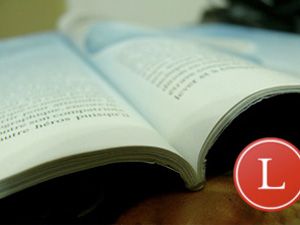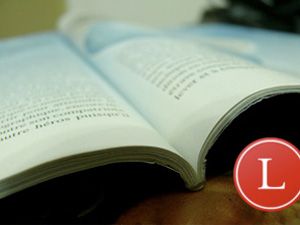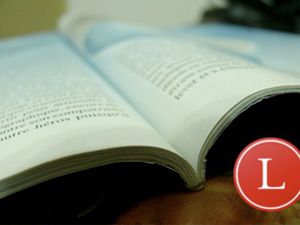
Mother Jones guest blogger Mark Armstrong is the founder of Longreads, a site devoted to uncovering the best long-form nonfiction articles available online. And what better time to curl up with a great read than over the weekend? Below, a hand-picked bouquet of five interesting stories, including word count and approximate reading time. (Readers can also subscribe to The Top 5 Longreads of the Week by clicking here.)
1. A Holocaust Survivor Raised a Fist to Death | Kurt Streeter | Los Angeles Times | Aug. 5, 2011 | 6 minutes (1,634 words)
Leon Weinstein, now 101, feared for his life in the Warsaw Ghetto. Then he and his wife gave up their 18-month-old daughter in the hopes she would survive:
“She was Jewish, but to live she needed a Christian name.
“She could not be Natalie Leya Weinstein, not in wartime Warsaw. Her father wrote her new name on a piece of paper.
“Natalie Yazinska.
“Her mother, Sima, sobbed.
“‘The little one must make it,’ Leon Weinstein told his wife. ‘We got no chance. But the little one, she is special. She must survive.’
“He fixed a metal crucifix to a necklace and hung it on their daughter. On the paper, he scrawled another fiction: ‘I am a war widow, and I have no way of taking care of her. I beg of you good people, please take care of her. In the name of Jesus Christ, he will take care of you for this.’
“A cold wind cut at the skin that December morning, so Leon Weinstein bundled Natalie, 18 months old, in heavy pants and a thick wool sweater. He headed for a nearby apartment, the home of a lawyer and his wife. The couple did not have a child. Weinstein hoped they wanted one.”
More Streeter: “Dorsey High’s Football Program Is About More than Athletics” (Dec. 2009) |
2. Matter of Rothko | David Levine | Triple Canopy | Aug. 2, 2011 | 19 minutes (4,784 words)
How Mark Rothko’s death created a mess for Levine’s family. Levine examines the life of his father—who was named an executor of the artist’s multimillion-dollar estate—and Rothko, who left nothing for his children:
“Why are we all fighting so fiercely on behalf of bad fathers? Rothko was, by all accounts, a terrible parent, who alienated his teenage daughter to such an extent that she told him she hated his paintings. So he responded as any narcissistic, alcoholic, monomaniacal abstract expressionist would, and he left the paintings in the hands of his friends. Once he’s dead, she’s sorry, and wants to take it all back. But by now the paintings are with others, who have their own interests and their own understanding of his priorities. And they are villainized. And they lose. And my father dies. And I barely notice, because as far as I know, he’s a loser, and a jerk, and then thirty years later someone brings me a failure’s blessings from beyond the grave, and suddenly I feel as though my father’s memory is being betrayed. And suddenly I find myself a loyalist, because apparently it’s more important to like your father’s memory than to like your father.”
More Triple Canopy: “Mao, King Kong and the Future of the Book” (Aug. 2010)
3. The History and Mystery of the High Five | Jon Mooallem | ESPN Magazine | July 30, 2011 | 12 minutes (3,128 words)
Many have been credited with creating the revolutionary hand-slap, but Mooallem settles the complicated matter once and for all. He starts with a call to former college basketball player Lamont Sleets:
“I was calling Sleets because I wanted to talk to the man who invented the high five. I’d first read about him in 2007 in a press release from National High Five Day, a group that was trying to establish a holiday for convivial palm-slapping on the third Thursday in April. Apparently, Sleets had been reluctantly put in touch with the holiday’s founders, and he explained that his father, Lamont Sleets Sr., served in Vietnam in the 1st Battalion, 5th Infantry—a unit nicknamed The Five. The men of The Five often gathered at the Sleets home when Lamont Jr. was a toddler. They’d blow through the front door doing their signature greeting: arm straight up, five fingers spread, grunting “Five.” Lamont Jr. loved to jump up and slap his tiny palms against their larger ones. “Hi, Five!” he’d yell, unable to keep all their names straight. Years later, Sleets started high-fiving his Murray State teammates, and when the Racers played away games, other teams followed. In short, Lamont Sleets was both the inventor of the high five and its Johnny Appleseed.
“The low five had been a fixture of African-American culture since at least World War II. It might seem impossible to pinpoint when the low five ratcheted itself upright and evolved into the high five, but there are countless creation myths in circulation. Magic Johnson once suggested that he invented the high five at Michigan State. Others trace it to the women’s volleyball circuit in the 1960s. But the Sleets story quickly shot around the Internet and into local newspapers, displacing, or at least undermining, all other claims. Sleets was budging his way atop the high-five hierarchy.”
More Mooallem: “Do-It-Yourself Genetic Engineering” (New York Times, Feb. 2010)
4. The Bell Jar at 40 | Emily Gould | Poetry Foundation | July 31, 2011 | 18 minutes (4,578 words)
Revisiting Sylvia Plath’s only novel, written a year before her suicide in 1963 and published in 1970:
“It’s always interesting when a very strange book is also an enduringly popular book. The Bell Jar has sold more than three million copies and is a mainstay of American high school English classes; it was made into a movie in 1979, and another version, starring Julia Stiles, is currently in production. Like The Catcher in the Rye, it is a touchstone for a certain kind of introspective, moody teenager—the kind of teenager who used to listen to the Cure and, later on, Tori Amos, and who these days listens to—actually I have no idea, but she definitely has a blog. (There are an amazing variety of embarrassing shrines to The Bell Jar online.) Unlike Catcher, it also has other sources of partisan support: feminists of the 1970s claimed Plath as a martyred patron saint of repressive domesticity, and mental illness advocates have found in her work easily identifiable symptoms and syndromes that were misdiagnosed and barbarically treated.
“As much as it was initially underappreciated by the British press, The Bell Jar was overpraised on its American publication. As such, it has frustrated generations of critics and biographers by refusing to be quite the great novel you’d want a great poet’s only novel to be.”
More Gould: “Why I Write for Free” (June 2009)
5. Martha Stewart: The Comeback That Wasn’t | Benjamin Wallace | New York Magazine | July 31, 2011 | 21 minutes (5,274 words)
Stewart came out of prison reinvigorated, but her company has suffered from executive shuffling and the loss of a lucrative licensing partnership with Kmart. Martha Stewart Living Omnimedia has had just one profitable year in the last eight:
“The new, softer Martha Stewart who emerged from prison allowed microwave ovens to be referred to in her magazines for the first time. She named one of her French bulldogs Francesca, after a fellow convict. She announced plans to do a TV show about rehabilitating errant women while they rehabilitated a house; a fixer-upper was bought in Norwalk.
“That show never happened (among other reasons, Stewart’s probation forbade her to associate with felons), but otherwise, Martha Stewart Living Omnimedia became a deal-making machine. Besides the Burnett TV deal, there were a series of how-to DVDs to be distributed by Warner Home Video; an all-Martha-all-the-time satellite-radio channel on Sirius XM; a business book called The Martha Rules; and a licensing agreement under which KB Home would develop whole communities of Martha-designed and –branded houses. MSLO made plans for a magazine targeted at younger readers called Blueprint, which would launch in 2006.
“This burst of activity was a strategic plan to save MSLO from extinction, but it soon seemed to some observers within the company as if Stewart’s attitude had less to do with business prudence than with an urgent desire to make up for the years she had lost.”
More Wallace: “Monetizing the Celebrity Meltdown” (Nov. 2010)
Featured Longreader: Andrew Womack | @womack
Andrew is a founding editor of The Morning News and proprietor of The Staff Recommends.
“Hey, what did you and your faith in government and your 401(k) do this week? Let’s all at least agree on this: It’s been a rough five days. It’s time to take a break, maybe with some reading. Maybe even try and restore some level of belief in our leadership?
“How auspicious, then, that this week The New Yorker published Nicholas Schmidle’s play-by-play account of the mission to kill Osama bin Laden. This was an event that happened some news cycles back, we should recall, and Schmidle tells it here in gripping detail: from the first weeks of Obama’s presidency to the behind-the-scenes intelligence and military strategizing to a night where everything went wrong—then right.”
Getting Bin Laden | Nicholas Schmidle | The New Yorker | Aug. 8, 2011 | 33 minutes (8,422 words)





